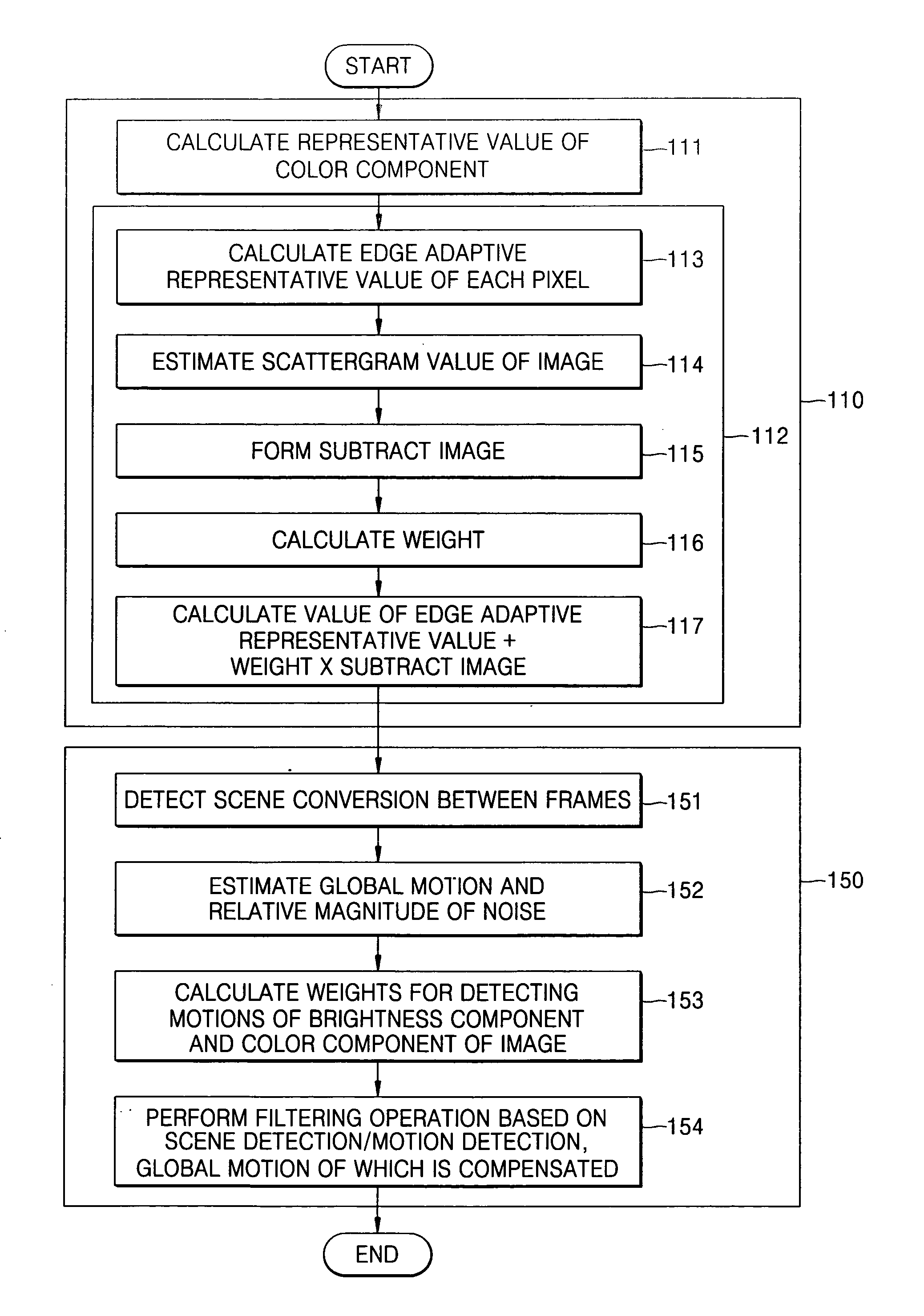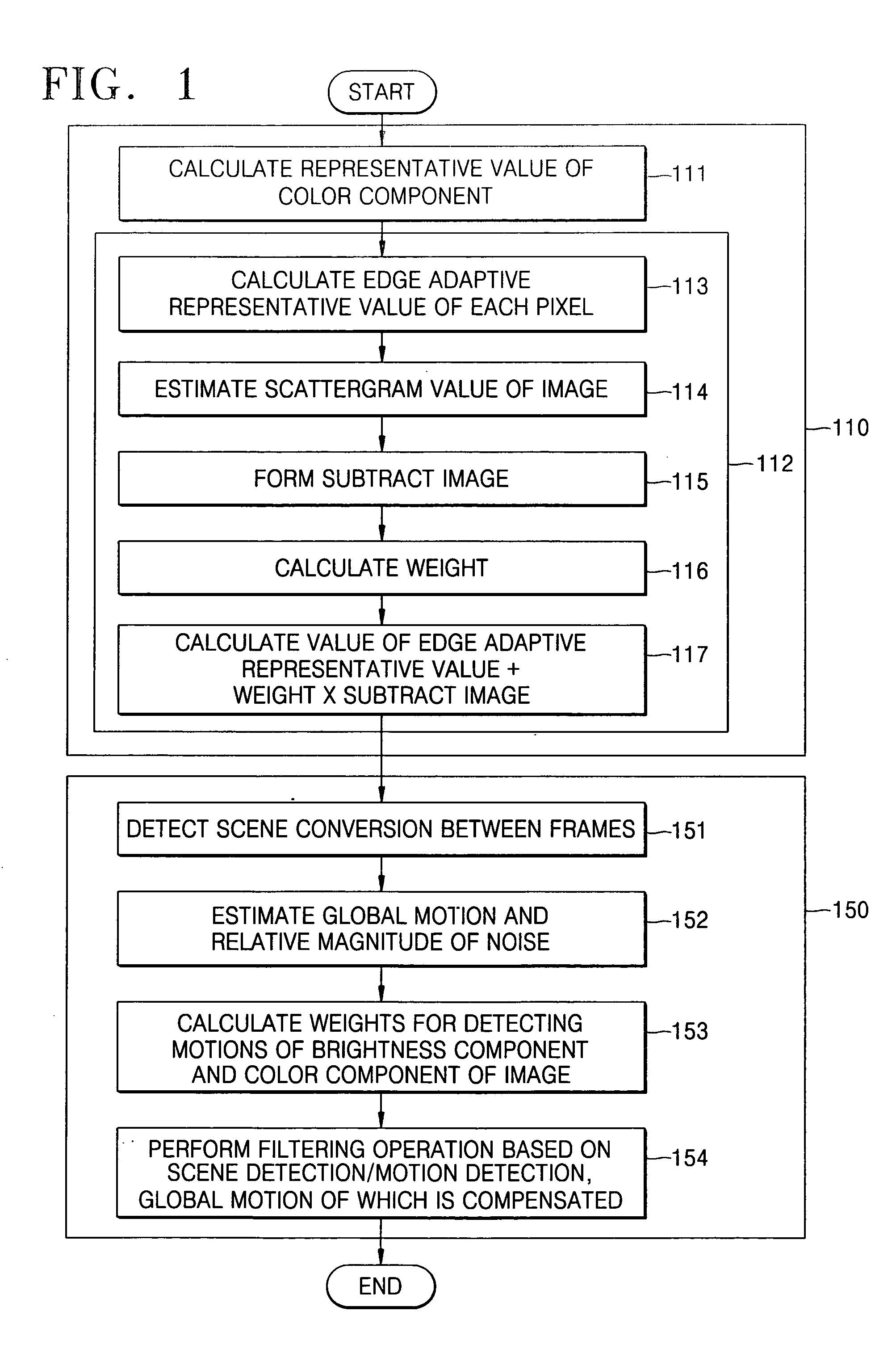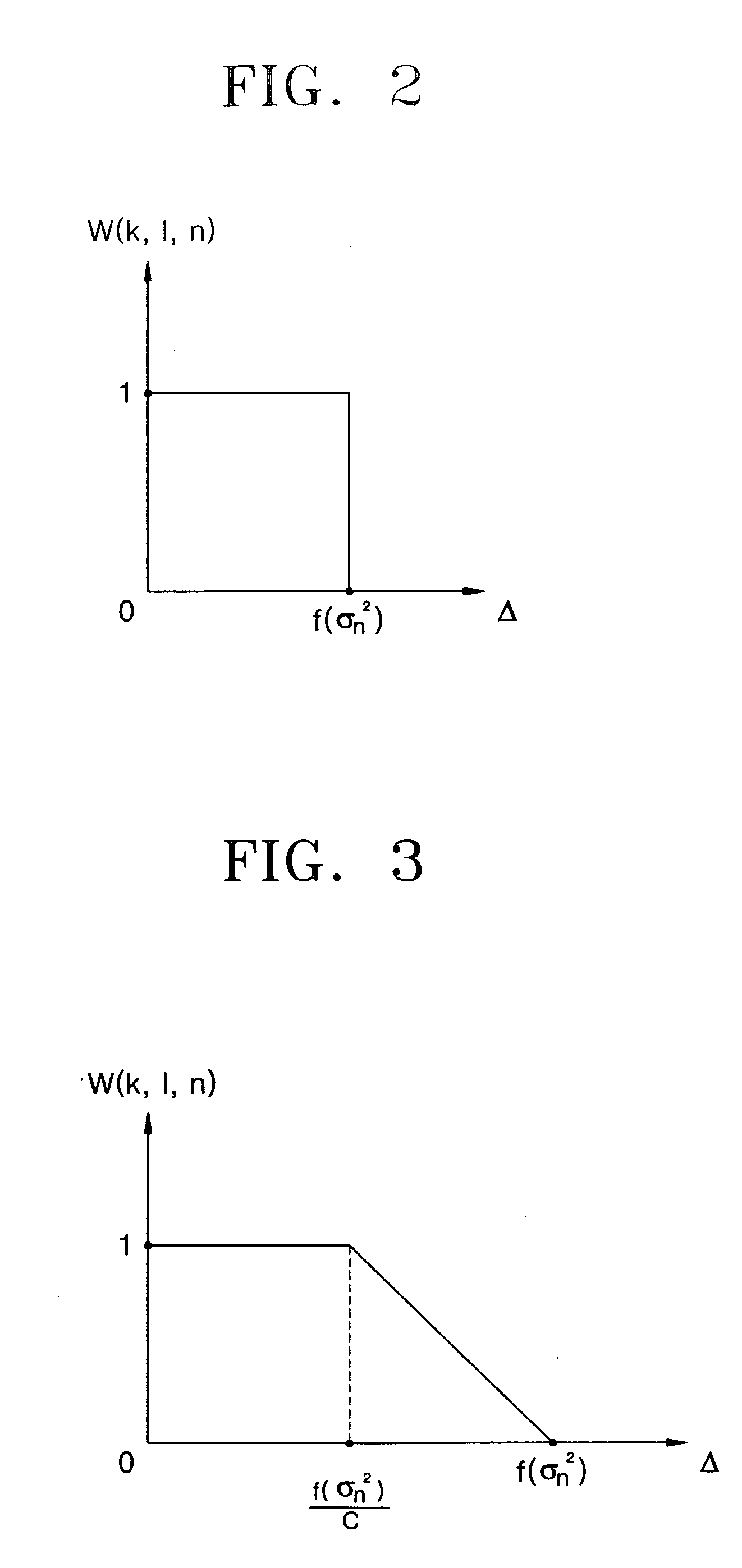Method of removing noise from digital moving picture data
a technology of moving picture and noise removal, applied in the field of digital encoding of moving pictures, can solve the problems of blur or even loss of motion objects in the restored scene, the intensity of a fast moving pixel changing very sharply, and the noise is inevitable during the encoding process
- Summary
- Abstract
- Description
- Claims
- Application Information
AI Technical Summary
Benefits of technology
Problems solved by technology
Method used
Image
Examples
Embodiment Construction
[0033] The attached drawings illustrate preferred embodiments of the present invention.
[0034] Hereinafter, the present invention will be described in detail by explaining preferred embodiments of the invention with reference to the attached drawings. Like reference numerals in the drawings denote like elements.
[0035]FIG. 1 is a flow chart illustrating a method of removing noise from digital moving picture data according to embodiments of the present invention.
[0036] Referring to FIG. 1, the method of removing noise from the digital moving picture data includes processing spatial filtering (110) in an embodiment of the present invention and processing temporal filtering (150) in another embodiment of the present invention. Another exemplary embodiment of the present invention uses the two steps (110 and 150) together.
[0037] According to an embodiment of the invention (a method of removing noise from the digital moving picture data), a filter based on a linear minimum mean square ...
PUM
 Login to View More
Login to View More Abstract
Description
Claims
Application Information
 Login to View More
Login to View More - R&D
- Intellectual Property
- Life Sciences
- Materials
- Tech Scout
- Unparalleled Data Quality
- Higher Quality Content
- 60% Fewer Hallucinations
Browse by: Latest US Patents, China's latest patents, Technical Efficacy Thesaurus, Application Domain, Technology Topic, Popular Technical Reports.
© 2025 PatSnap. All rights reserved.Legal|Privacy policy|Modern Slavery Act Transparency Statement|Sitemap|About US| Contact US: help@patsnap.com



